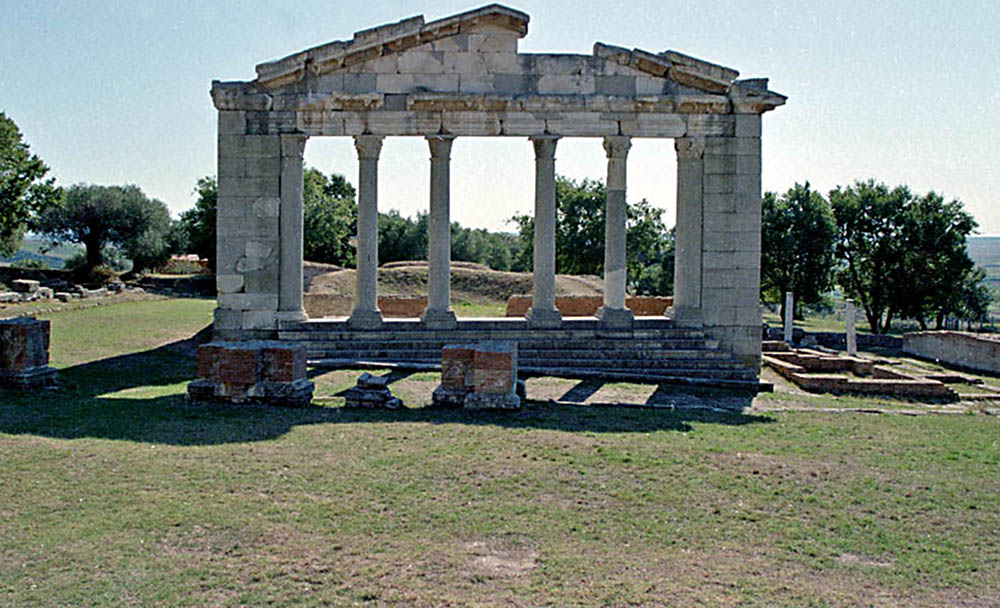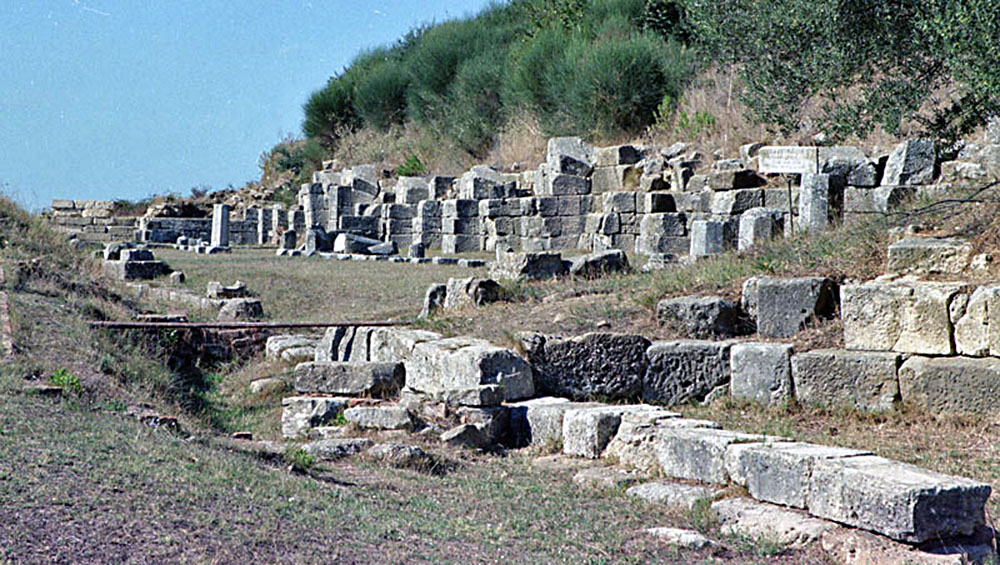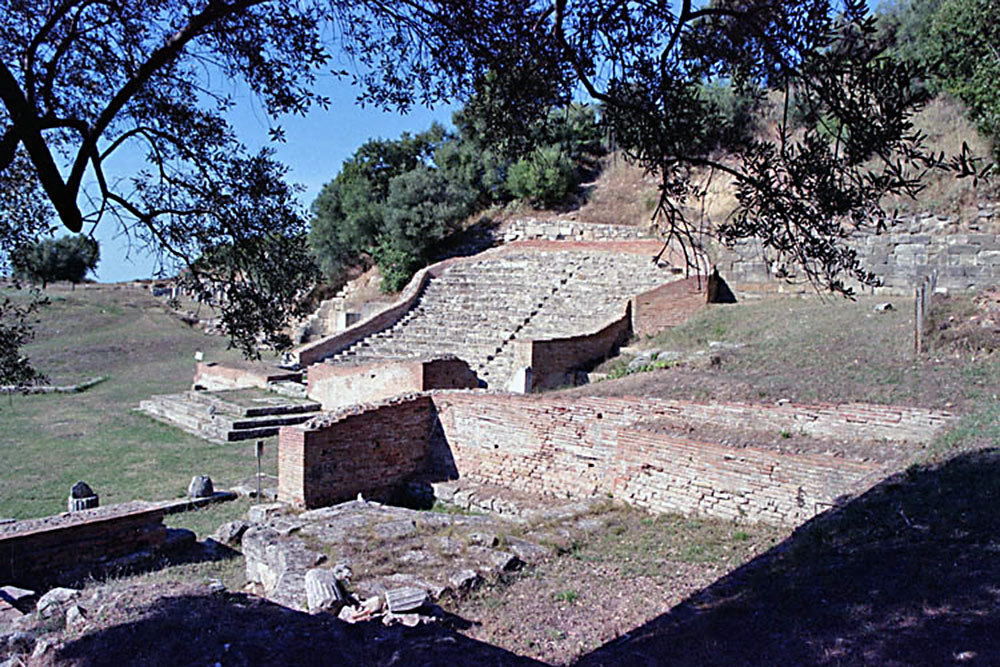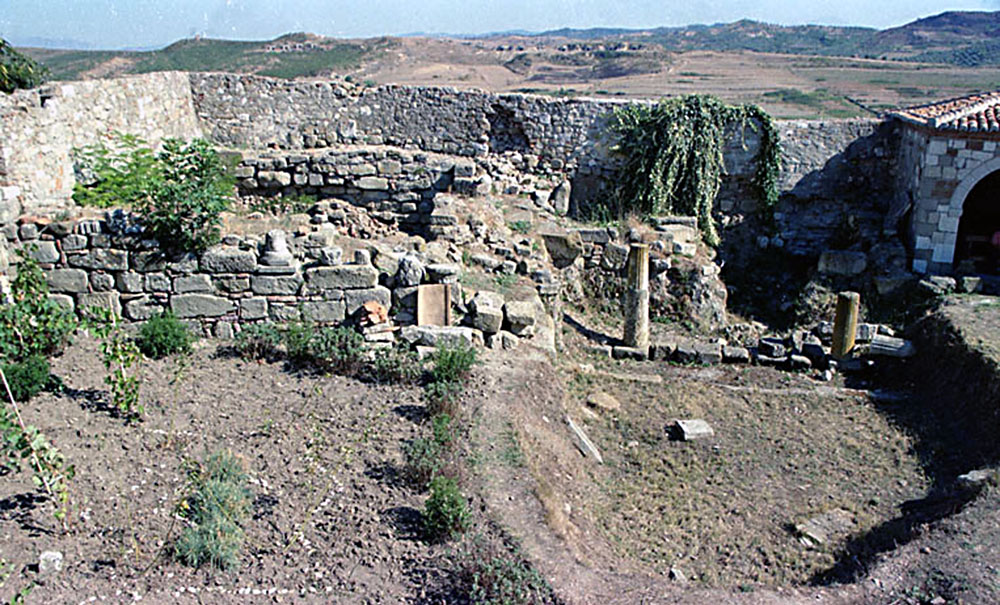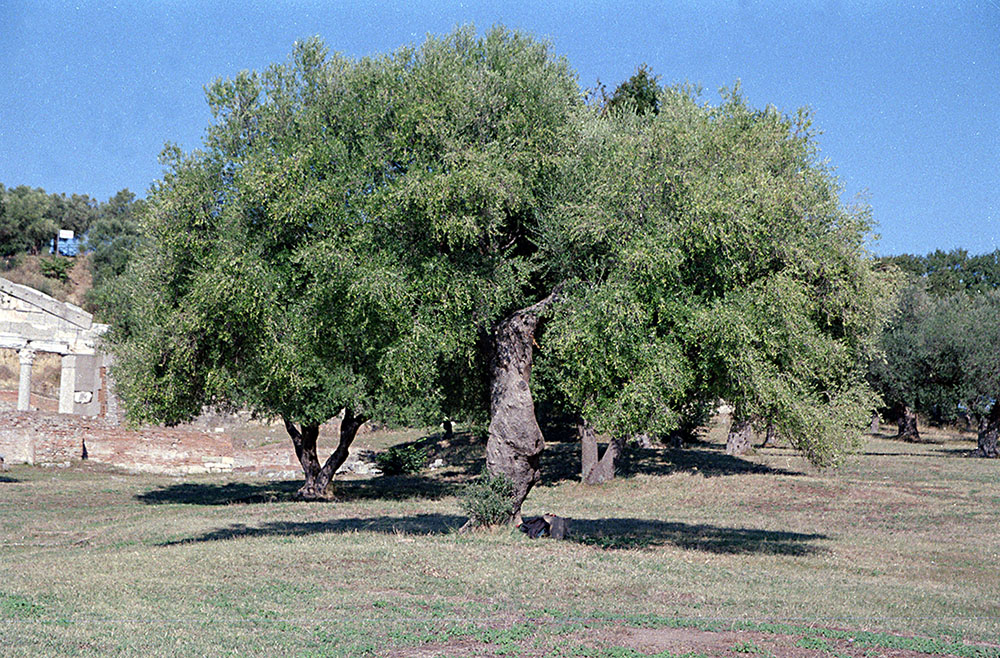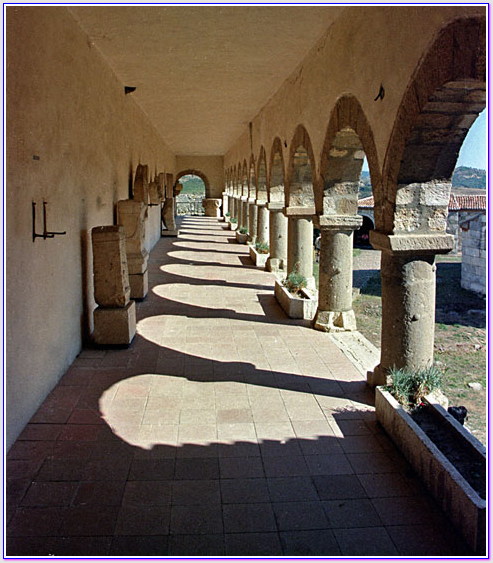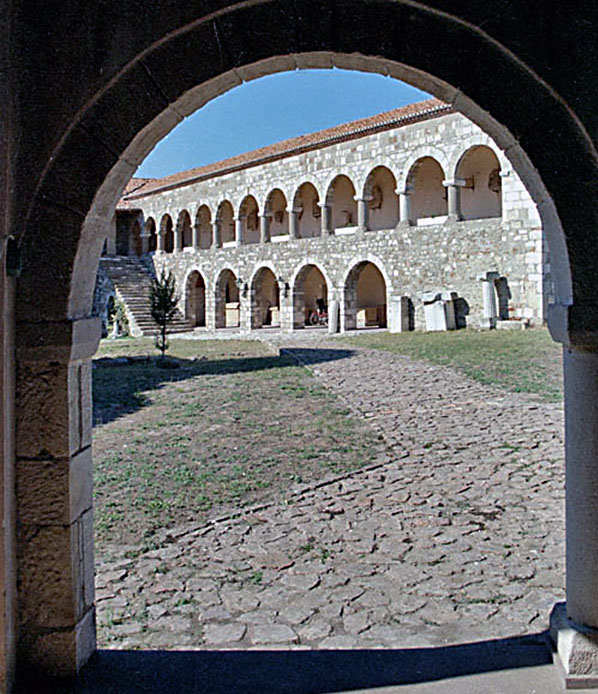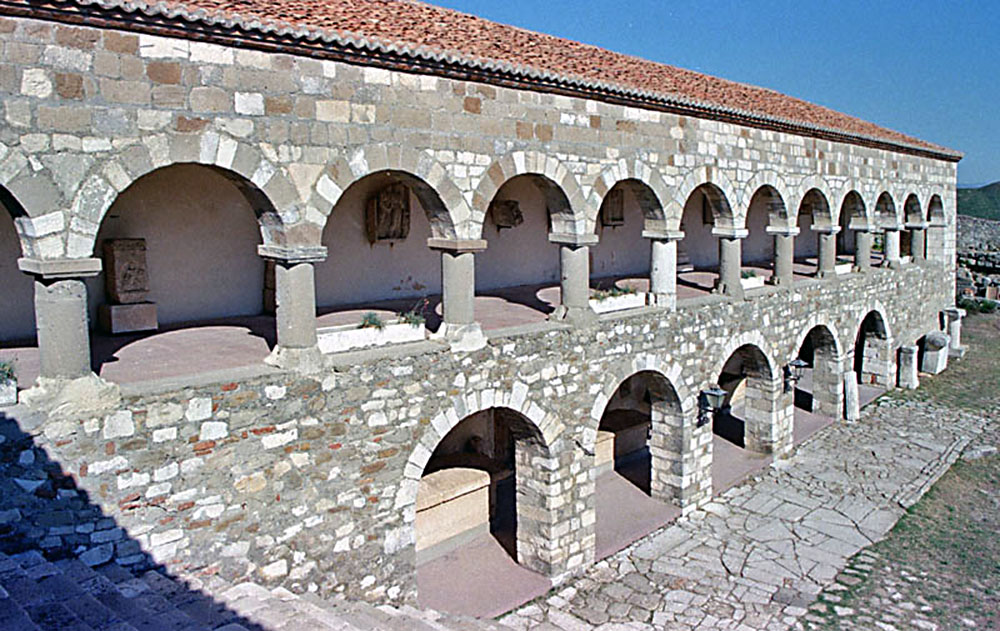
Il parco archeologico di Apollonia si trova a 12 km a ovest di Fier, a ridosso del paese di Pojan. L’antica città si erge alle falde di una solitaria collina di fronte alla laguna di Darzeza, tra la foce del fiume Seman e quello di Vjosa. L’area archeologica si estende su una superfice di 137 ettari e tremila anni di tempo, dove reminescenze di civiltà illire, greco, romache, bizantine, ottomaneIl primo a rendersi conto della localizzazione dell'antica Apollonia fu Ciriaco d'Ancona (1391- 1452), archeologo, umanista, epigrafista e viaggiatore italiano, considerato il padre dell'archeologia, che ne descrisse nel 1435 i resti e le iscrizioni.
Il simbolo di Apollonia è il monumento romano di Agonothetes che sarebbe il suo " Bouleuterion " , costruito nel corso del II secolo.
Il Monumento di Aganothetes è al centro della città, ha una struttura a forma semicircolare e serviva come un luogo di riunione del consiglio della città. La facciata frontale della struttura è composta da sei pilastri con capitelli corinzi.
Ad Apollonia questo si trova nel centro della città vicino all'Agorà (il punto di incontro e mercato centrale di una città). Le città stato dell'antica Grecia chiamavano la loro sala riunioni del consiglio comunale "Bouleuterion". Ad Apollonia questo si trova nel centro della città vicino all'Agorà (il punto di incontro e mercato centrale di una città). Fu costruito nell'ultimo quarto del II secolo a.C., durante il periodo romano.
L'edificio fu costruito dagli alti ufficiali della città per commemorare la morte dei militari. Vista poteriore.
Il simbolo di Apollonia è il monumento romano di Agonothetes che sarebbe il suo " Bouleuterion " , costruito nel corso del II secolo.
Il Monumento di Aganothetes è al centro della città, ha una struttura a forma semicircolare e serviva come un luogo di riunione del consiglio della città. La facciata frontale della struttura è composta da sei pilastri con capitelli corinzi. Ad Apollonia questo si trova nel centro della città vicino all'Agorà (il punto di incontro e mercato centrale di una città).
L'edificio fu costruito dagli alti ufficiali della città per commemorare la morte dei militari. Vista poteriore.







